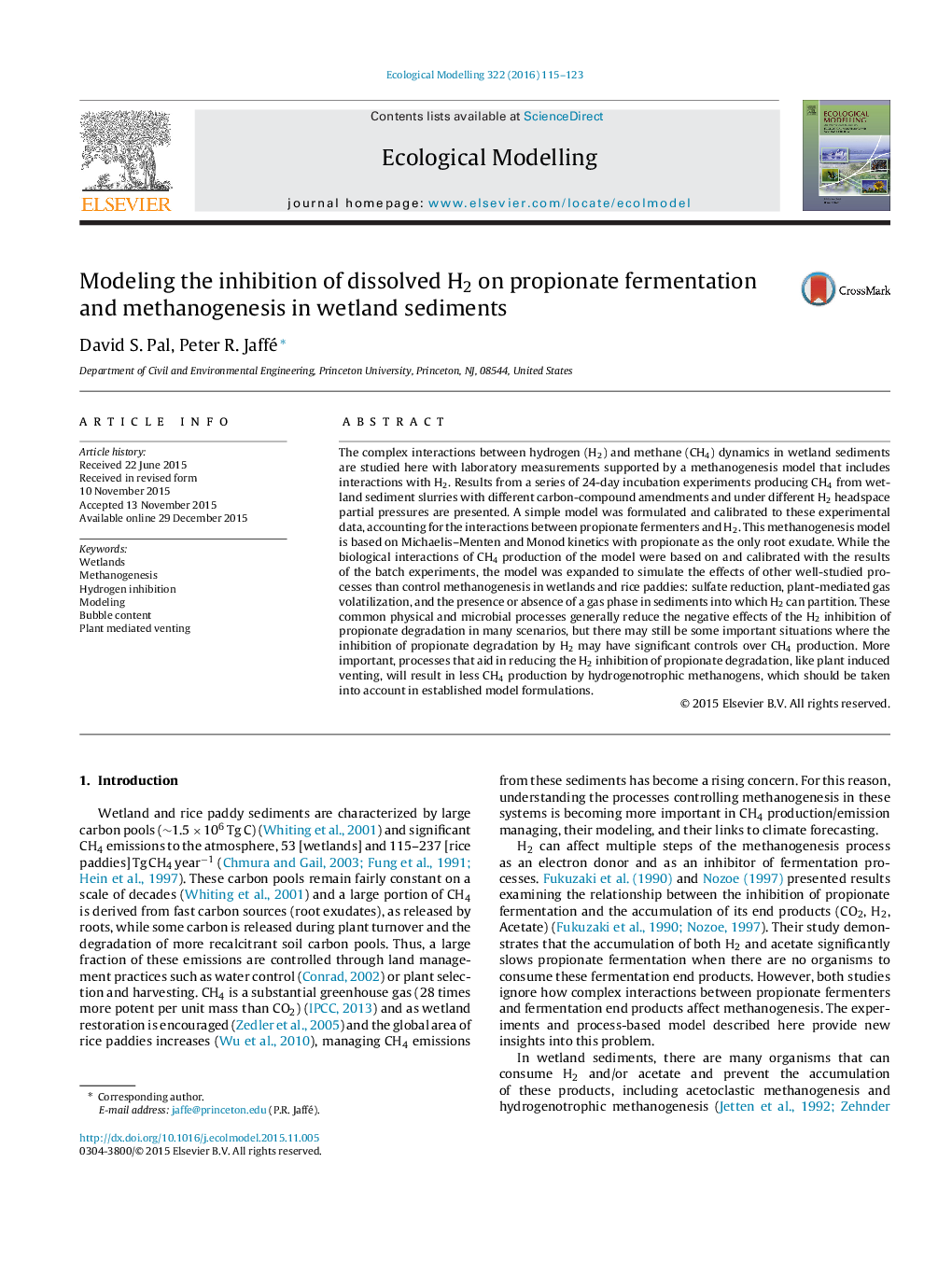| Article ID | Journal | Published Year | Pages | File Type |
|---|---|---|---|---|
| 6296226 | Ecological Modelling | 2016 | 9 Pages |
Abstract
The complex interactions between hydrogen (H2) and methane (CH4) dynamics in wetland sediments are studied here with laboratory measurements supported by a methanogenesis model that includes interactions with H2. Results from a series of 24-day incubation experiments producing CH4 from wetland sediment slurries with different carbon-compound amendments and under different H2 headspace partial pressures are presented. A simple model was formulated and calibrated to these experimental data, accounting for the interactions between propionate fermenters and H2. This methanogenesis model is based on Michaelis-Menten and Monod kinetics with propionate as the only root exudate. While the biological interactions of CH4 production of the model were based on and calibrated with the results of the batch experiments, the model was expanded to simulate the effects of other well-studied processes than control methanogenesis in wetlands and rice paddies: sulfate reduction, plant-mediated gas volatilization, and the presence or absence of a gas phase in sediments into which H2 can partition. These common physical and microbial processes generally reduce the negative effects of the H2 inhibition of propionate degradation in many scenarios, but there may still be some important situations where the inhibition of propionate degradation by H2 may have significant controls over CH4 production. More important, processes that aid in reducing the H2 inhibition of propionate degradation, like plant induced venting, will result in less CH4 production by hydrogenotrophic methanogens, which should be taken into account in established model formulations.
Related Topics
Life Sciences
Agricultural and Biological Sciences
Ecology, Evolution, Behavior and Systematics
Authors
David S. Pal, Peter R. Jaffé,
